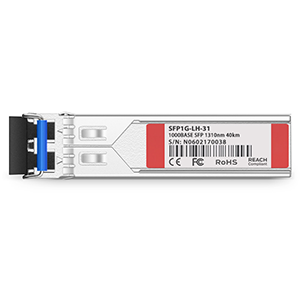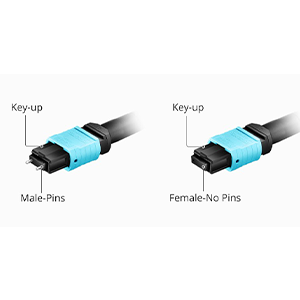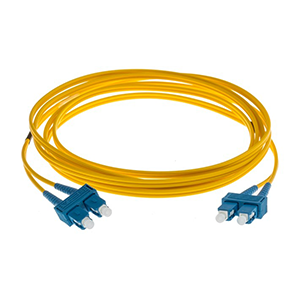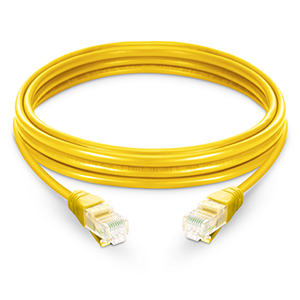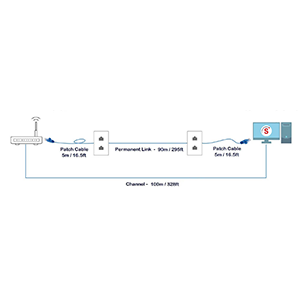In this article, I will delve into the definition, functions and advantages of SFP optical modules in networks. We will introduce the basic concepts and functions of SFP and explore its key functions in data transmission and signal transmission. As a flexible, high-speed and reliable optical module, SFP plays an important role in building network connections. Let us explore the wonderful applications of SFP optical modules in the network world!
Overview of SFP
-
The full name of SFP is Small Form-Factor Pluggable, which is also abbreviated as SFP optical module.
-
SFP, as an optical module, plays an important role in the network. It is a hot-swappable optical module used to transmit optical signals between network devices. SFP optical modules are commonly used in Ethernet and optical fiber communications to connect network devices, such as switches, routers, and servers.
-
The function of the SFP optical module is to convert electrical signals into optical signals and transmit optical signals between network devices. It transmits data through optical fiber, with high transmission rate and long-distance transmission capability. SFP optical modules support different transmission rates, such as 1 Gbps (Gigabit Ethernet) and 10 Gbps (10 Gigabit Ethernet) to meet different network needs.
The development history of SFP optical modules:
- Initial stage: The earliest form of optical module is GBIC (Gigabit Interface Converter), which is larger and consumes higher power. Later, in order to meet the needs of smaller size and high density, SFP optical modules were introduced and achieved great success.
- Development stage: With the advancement of technology, SFP optical modules continue to develop, supporting higher transmission rates and more functions. For example, 10 Gbps XFP optical modules have emerged for higher-speed applications.
- Current application scope: Currently, SFP optical modules are widely used in various network environments such as data centers, enterprise networks, telecom operators, and wide area networks. They are used for long-distance transmission between connecting devices, fiber optic interconnection and network expansion.
SFP (Small Form-Factor Pluggable) optical module is a hot-swappable optical module used to transmit optical signals between network devices. As a basic optical module, it can achieve high-speed data transmission and long-distance optical fiber connections. SFP optical modules have gone through a development process, gradually replacing larger GBIC modules, and become the mainstream choice in current networks, and are widely used in various network environments.
Basic functions of SFP
-
SFP optical modules have multiple main functions and uses in networks, including the following:
-
Data transmission: SFP optical module transmits data signals through optical fiber. It converts electrical signals into optical signals and transmits them to the target device through optical fiber to achieve high-speed data transmission.
-
Long-distance transmission: Due to the use of optical fiber as the transmission medium, SFP optical modules can support long-distance data transmission. The distance it can transmit signals ranges from tens of meters to tens of kilometers, depending on the fiber type and transmission rate.
-
Network interconnection: SFP optical modules are used to connect network devices, such as switches, routers and servers. It provides flexible interfaces that enable fiber optic interconnection between different devices and expands the scale and capacity of the network.
-
Multi-mode and single-mode support: SFP optical modules can support multi-mode optical fiber and single-mode optical fiber. Multimode fiber is suitable for short-distance transmission, while single-mode fiber is suitable for long-distance transmission.
-
Hot-swappable function: The SFP optical module has a hot-swappable function, allowing the optical module to be inserted or removed during operation without shutting down the device or interrupting the network connection. This makes network maintenance and upgrades more convenient and flexible.
-
Data transmission and signal transmission process:
The data transmission and signal transmission process of the SFP optical module is as follows:
-
Sending end: The laser in the SFP optical module converts electrical signals into optical signals. Lasers emit pulses of light to represent transmitted data.
-
Optical fiber transmission: Optical signals are transmitted through optical fibers connected to SFP optical modules. An optical fiber is a slender glass or plastic light-guiding material with a high refractive index capable of transmitting optical signals along its length.
-
Receiving end: The receiving end of the SFP optical module where the optical signal reaches the target device. A photodetector in the receiving end converts the optical signal into an electrical signal.
-
Electrical signal processing: The circuit at the receiving end processes and decodes the electrical signal to restore the original data signal.
-
Send and receive capabilities and supported transfer rates:
The SFP optical module has sending and receiving functions, allowing bidirectional data transmission. It can send and receive data signals simultaneously.
SFP optical modules support different transmission rates, such as 1 Gbps (Gigabit Ethernet), 10 Gbps (10 Gigabit Ethernet), etc. The transmission rate depends on the specifications of the optical module and the support capabilities of the device. For higher speed applications, there are other types of optical modules available, such as SFP+ (enhanced SFP), QSFP (quad density SFP), etc.
In short, SFP optical modules have multiple main functions and uses in the network, including data transmission, long-distance transmission, network interconnection and fiber optic support. It achieves high-speed data transmission and flexible network connections by converting electrical signals into optical signals and transmitting them through optical fibers. The SFP optical module supports both sending and receiving functions, and can support different transmission rates to meet different network needs.
Applicable scenarios of SFP
SFP optical modules are widely used in different network environments, including data centers, enterprise networks and telecommunications industries. The following are specific application cases of SFP optical modules in these fields:
-
Data center:
In data centers, SFP optical modules are used to build high-speed, scalable and flexible network architectures. They are used to connect fiber optic links between servers, storage devices, and network switches. SFP optical modules support high-bandwidth data transmission, such as 10 Gbps and 40 Gbps, to meet the needs of large-scale data centers. By using SFP optical modules, data centers can achieve fast data transmission, low latency and high reliability.
-
Enterprise Network:
In enterprise networks, SFP optical modules are widely used to build local area networks (LAN) and wide area networks (WAN). They are used to connect network devices such as switches, routers, and firewalls to achieve high-speed data transmission and reliable network connections. The hot-swappable function of SFP optical modules makes network maintenance and upgrades more convenient. Enterprises can choose SFP optical modules of different types and speeds according to network requirements to adapt to different application scenarios.
-
Telecom industry:
In the telecommunications industry, SFP optical modules are used in the construction and expansion of optical fiber communication networks. They are used in fields such as optical fiber transmission systems, optical fiber access networks and optical transport networks. SFP optical modules support long-distance transmission and high-bandwidth requirements, can connect communication equipment in different locations, and achieve reliable data transmission. Telecom operators can use SFP optical modules to provide high-speed Internet access, broadband services and other communication services.
SFP optical modules play an important role in building flexible, high-speed and reliable network connections. Their hot-swappable capabilities make network maintenance easier without interrupting network connectivity. The flexibility of SFP optical modules allows network equipment to easily adapt to different transmission rates and fiber types to meet the needs of different network environments. Whether it is data center, enterprise network or telecommunications industry, SFP optical modules provide important solutions for building efficient and reliable communication infrastructure.
Comparison between SFP and other optical modules
SFP (Small Form-Factor Pluggable) is a small pluggable optical module. Compared with other common optical modules such as GBIC (Gigabit Interface Converter) and XFP (10 Gigabit Small Form Factor Pluggable), it has the following advantages and difference:
-
Size and Density:
SFP optical modules are smaller than GBIC and XFP. They are more compact in size and occupy less space. This enables SFP optical modules to be used in higher-density network equipment, such as switches and routers, providing greater port counts and higher port density.
-
Transmission rate:
GBIC optical modules mainly support low-rate transmission, such as 1 Gbps. XFP optical modules are mainly used to support higher speed transmission, such as 10 Gbps. The SFP optical module can flexibly support multiple transmission rates, including 1 Gbps, 10 Gbps and higher rates, making the SFP optical module more flexible and scalable to meet different network needs.
-
Hot swap function:
SFP, GBIC and XFP optical modules all have hot-swappable capabilities and can be inserted or removed during operation without shutting down the device or interrupting the network connection. This makes network maintenance and upgrades more convenient and flexible.
-
Supported fiber types:
The SFP optical module supports multi-mode optical fiber and single-mode optical fiber, making it suitable for transmission in different distance ranges. GBIC and XFP optical modules can also support multi-mode and single-mode fiber, but are generally more commonly used for long-distance transmission over single-mode fiber.
Why is SFP becoming more and more common in networks?
-
Flexibility and scalability: SFP optical modules can support a variety of transmission rates and fiber types, making them suitable for different network requirements and application scenarios. This flexibility and scalability makes SFP a versatile optical module solution.
-
Size and density: The small size and high port density of SFP optical modules enable their wide application in compact network equipment, such as switches and routers. They offer increased port counts to meet the high-density connectivity requirements in modern networks.
-
Technological progress and cost reduction: With the advancement of technology and intensified market competition, the cost of SFP optical modules has gradually decreased, allowing more users to use SFP optical modules to build high-speed and reliable network connections.
In short, SFP optical modules have advantages and differences in size, transmission rate and flexibility compared to other common optical modules such as GBIC and XFP. The application of SFP is becoming more and more common because of its flexibility, scalability, small size and high-density connection capabilities, as well as technological advancement and cost reduction.
SFP deployment and configuration
Select and purchase SFP optical modules:
-
Compatibility requirements: When selecting an SFP optical module, make sure it is compatible with your network equipment. Consult the device’s specifications and compatibility list to determine supported optical module types and brands. Some network equipment may have restrictions on specific SFP optical modules.
-
Transmission rate and distance requirements: Select the appropriate transmission rate and supported transmission distance based on your network needs. Common SFP optical module rates include 1 Gbps, 10 Gbps, etc., and the transmission distance can range from tens of meters to dozens of kilometers.
-
Fiber type: Determine the type of fiber your network uses, such as multimode fiber (MMF) or single-mode fiber (SMF). Select the corresponding SFP optical module to ensure compatibility.
Install, connect and configure SFP optical modules:
-
Turn off the equipment: Before installing or replacing the SFP optical module, make sure that the relevant equipment is turned off and disconnected from the power supply.
-
Install the SFP optical module: Carefully insert the SFP optical module into the SFP slot of the device, making sure to insert it in the correct direction. Press gently until firmly inserted to ensure a good connection.
-
Connect optical fiber: Use appropriate optical fiber to connect the SFP optical module and other devices, such as switches or routers. According to the specifications of the optical module and equipment, correctly connect the multimode fiber or single-mode fiber, and pay attention to the alignment and cleaning of the fiber core.
-
Configure the device: Once the SFP optical module is installed and connected, turn on the device and configure it as needed. This may include setting the transmission rate, enabling the optical module port, configuring VLAN, adjusting the working mode of the optical module, etc.
Monitoring and troubleshooting suggestions for SFP optical modules:
-
Monitoring: Use network management tools or interfaces provided by the device to monitor the status and performance of the SFP optical module. By monitoring indicators such as optical power, link status, and error counts, potential problems or anomalies can be discovered in a timely manner.
Troubleshooting: If you are experiencing connection issues or performance degradation, you can try the following troubleshooting steps:
- Check the fiber connection: Make sure the fiber connection is secure, the fiber core is properly aligned, and there is no damage or bending.
- Clean SFP optical modules and fiber optic connectors: Use appropriate cleaning tools to clean SFPOptical modules and fiber optic connectors to remove dust, grease or dirt.
- Check device configuration: Verify whether the device configuration is correct, such as transmission rate, enabling status of optical module ports, etc.
- Replace the optical module: If the above steps are invalid, try to replace the SFP optical module to ensure that the fault is not caused by the optical module itself.
Please note that when configuring and troubleshooting SFP optical modules, follow the documentation and guidelines provided by the equipment manufacturer, and observe relevant safety operations.
Performance and scalability considerations of SFP
The performance and scalability of SFP optical modules are important factors to consider during the design and selection process. The following are some key points about the performance indicators and scalability of SFP optical modules:
Performance indicators:
-
Transmission distance: The transmission distance of the SFP optical module depends on the fiber type and the specifications of the optical module. Multimode fiber (MMF) SFP is usually used for short-distance transmission, such as tens to hundreds of meters. Single-mode fiber (SMF) SFP can support longer transmission distances, from a few kilometers to dozens of kilometers or even further.
-
Power consumption: The power consumption of SFP optical modules is an important consideration, especially in environments with high-density deployment and energy-saving requirements. The level and range of power consumption vary depending on the specific SFP model and manufacturer, and the relevant information can be found in the optical module’s specification sheet or data sheet.
-
Temperature range: The operating temperature range of the SFP optical module refers to the temperature range in which it can operate normally. Generally, the standard operating temperature range of SFP optical modules is 0°C to 70°C. However, there are also some SFP optical modules that provide a wider temperature range, such as industrial-grade modules, suitable for more extreme working environments.
Extensibility:
-
Multi-mode and single-mode SFP: SFP optical modules can be divided into two types: multi-mode and single-mode. Multimode optical fiber SFP is suitable for short-distance transmission, has a larger core diameter, and is usually used in LAN (Local Area Network) environments. Single-mode optical fiber SFP is suitable for long-distance transmission, has a smaller core diameter, and can support longer transmission distances.
-
Scalability and speed: SFP optical modules have good scalability and can support different transmission rates, such as 1 Gbps, 10 Gbps and higher rates. This flexibility makes SFP a scalable solution that can be upgraded and expanded to meet different network needs.
When selecting an SFP optical module, its performance indicators and scalability need to be evaluated based on specific network requirements and environmental conditions. Make sure to select the appropriate transmission distance, power consumption, and temperature range, and select multi-mode or single-mode SFPs to meet expected network requirements. In addition, pay attention to the compatibility of the device and the manufacturer’s recommendations.
Future development trend of SFP
SFP optical modules play an important role in the field of network technology. With the continuous growth of network requirements and the continuous advancement of technology, SFP is also constantly developing and evolving. The following are the development trends and prospects of SFP in the future:
-
High-speed data transmission: With the rapid growth of data demand, SFP optical modules will continue to promote the development of high-speed data transmission technology. SFP+, QSFP+ and QSFP28 optical modules of 10 Gbps, 40 Gbps and 100 Gbps are now available, and higher-rate SFP optical modules may appear in the future to meet the growing bandwidth needs.
-
Optical fiber network: With the widespread application and increasing demand for fiber optic networks, SFP optical modules will continue to play an important role in fiber optic communications. As fiber optic networks expand and upgrade, SFP optical modules may provide longer transmission distances, lower power consumption, and higher density to adapt to changing network needs.
-
Cloud computing: The rapid development of cloud computing has put forward higher requirements for network bandwidth and data center connections. SFP optical modules provide high-speed, reliable solutions for connecting servers, storage devices and network equipment. Future SFP optical modules may further optimize performance and provide higher throughput and lower latency to meet the needs of cloud computing environments.
-
Innovative applications: In addition to traditional data transmission and communication fields, SFP optical modules also have the potential for many innovative applications. For example, SFP optical modules can be used in fiber optic sensing applications to monitor and control environmental parameters such as temperature, pressure and humidity. In addition, SFP optical modules can also be used in optical fiber wireless access (Fi-Wi) systems to convert optical signals into wireless signals to achieve high-speed wireless network connections.
In general, SFP optical modules will continue to develop and adapt to changing network needs in the future. With the advancement of technology and the emergence of innovative applications, SFP optical modules will provide higher performance and more flexible solutions in fields such as high-speed data transmission, optical fiber networks and cloud computing.
Summary:
Thank you for reading our blog! Through the in-depth discussion of this article, you will have a more comprehensive understanding of the definition, functions and advantages of SFP optical modules in the network. As a flexible, high-speed and reliable optical module, SFP plays an important role in modern networks. Whether in data centers, enterprise networks or telecommunications industries, SFP optical modules can provide fast, reliable data transmission and flexible deployment options.
We provide high-quality SFP optical modules to meet your needs for building high-performance networks. By choosing our products, you can get high-speed data transmission, stable signal transmission and wide applicability. If you have any needs or questions about SFP optical modules, our team is ready to provide you with professional support.
what is sfp in networking FAQ
SFP modules are used in networking to enable the transmission and reception of data over different types of cables, such as fiber optic or copper. They provide flexibility by supporting various data rates and can be easily replaced or upgraded as needed.
An SFP module connects to a networking device through an SFP port, which is a small interface found on switches, routers, and other network equipment. The module is inserted into the SFP port, establishing a link between the device and the network.
Some advantages of using SFP modules in networking include their small form-factor, hot-swappable nature, and compatibility with various data rates and cable types. They offer flexibility, ease of installation, and the ability to customize network deployments based on specific needs.
Yes, SFP modules can support both fiber optic and copper connections. Depending on the specific SFP module, it can be equipped with a fiber optic transceiver or a copper transceiver, allowing for connectivity with different types of cables.
There are various types of SFP modules available, including SFP, SFP+, and SFP28. SFP supports data rates up to 1 Gbps, SFP+ supports data rates up to 10 Gbps, and SFP28 supports data rates up to 25 Gbps.
Yes, SFP modules are designed to be interchangeable between different networking equipment manufacturers, as long as they adhere to the industry-standard specifications. This interoperability allows for flexibility and compatibility in network deployments.
Yes, SFP modules can be used for long-distance network connections. The maximum transmission distance depends on factors such as the type of SFP module, the type of cable (single-mode or multi-mode fiber), and the quality of the fiber optic cables being used.
When selecting an SFP module, factors to consider include the required data rate, the type of cable (fiber optic or copper), the transmission distance, and any specific networking standards or protocols that need to be supported.
Yes, one of the advantages of SFP modules is their hot-swappable nature. They can be inserted or removed from an SFP port while the network equipment is powered on, allowing for easy maintenance, upgrades, and changes in network configurations.
SFP Related Products
-
400G QSFP-DD DR4 1310nm 500m Transceiver Module
-
400G QSFP-DD ER4 LWDM4 40km Transceiver Module
-
400G QSFP-DD ER8 LWDM8 40km Transceiver Module
-
400G QSFP-DD FR4 CWDM4 2km Transceiver Module
-
400G QSFP-DD LR4 CWDM4 10km Transceiver Module
-
400G QSFP-DD LR8 LWDM8 10km Transceiver Module
-
400G QSFP-DD PLR4 1310nm 10km Transceiver Module
-
400G QSFP-DD SR4 BIDI 850nm Transceiver Module
-
400G QSFP-DD SR8 850nm 100m Transceiver Module

